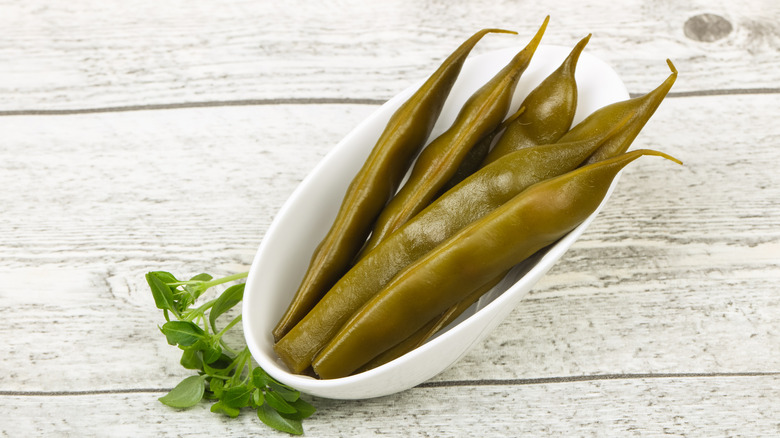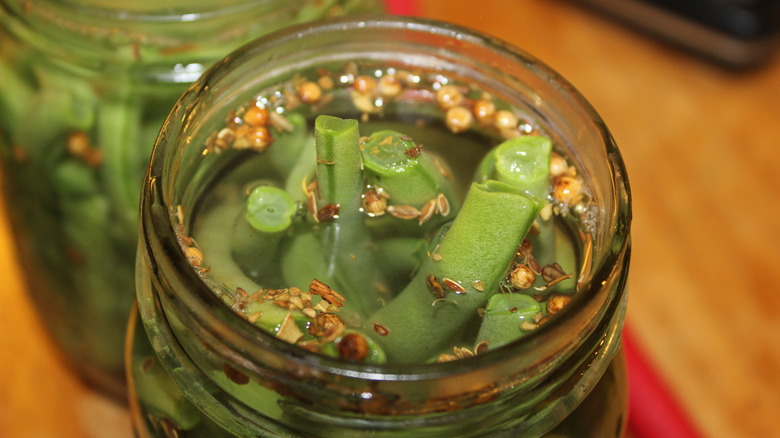What Are Dilly Beans?
When is a pickle not a pickle? When it didn't start out as a cucumber! Many delicious foods other than cucumbers can be preserved by pickling, and people have been pickling food to keep it safe for thousands of years, according to Wild Brine. The oldest record of pickling dates back to 4,000 B.C. in India. There's more than one way to pickle food, and your decisions affect the finished product. Dilly beans are green beans that can be pickled using various seasonings and preservation methods.
Traditional pickling is a bit labor intensive, requiring the processing and preservation of vegetables in jars using the water bath method, a process Ripley Farm describes as mostly "standing over a hot stove." The benefit of toiling over a hot stove is that your finished product is shelf stable and can last for months at room temperature. If you have a surplus of fresh veggies you're looking to use up, or if you're prepping to survive off the grid, traditional pickling has its benefits.
Quick pickling is a great alternative to laborious canning and yields delicious results. Vegetables that have been quick pickled must be stored in the refrigerator, but they're much easier to make and can be ready to eat in a day or two. While cucumbers make the classic pickles we love to stack on burgers, our new favorite pickled vegetable may be the dilly bean.
What exactly is a dilly bean?
In short, a dilly bean is a pickled green bean, and they're not only delicious, but they're also just plain fun. Serious Eats points out that dilly beans are a regional favorite in the southern U.S. and Vermont, and like other pickled items, they can be canned or made in the fridge using the quick pickling method. Because green beans are "sturdy little suckers," they stay beautifully crisp after pickling using either method. While you can preserve the life of fresh green beans by refrigerating or freezing them, making dilly beans extends the life of your green beans and infuses them with zingy flavors from the pickling spices you select.
Masterclass advises using fresh beans that are bright green for best results, and they also recommend playing around with both the kinds of vinegar and the seasonings and spices added to flavor dilly beans. Dilly beans should always include dill seed or sprigs of fresh dill, and other common flavorings include peppercorns, mustard seed, garlic, red pepper flakes, and coriander. Dilly beans work great as a part of an appetizer spread, a crunchy swizzle stick for a cocktail like a bloody Mary, or anytime you want to add a delicious briny pop of flavor and color to the plate.

